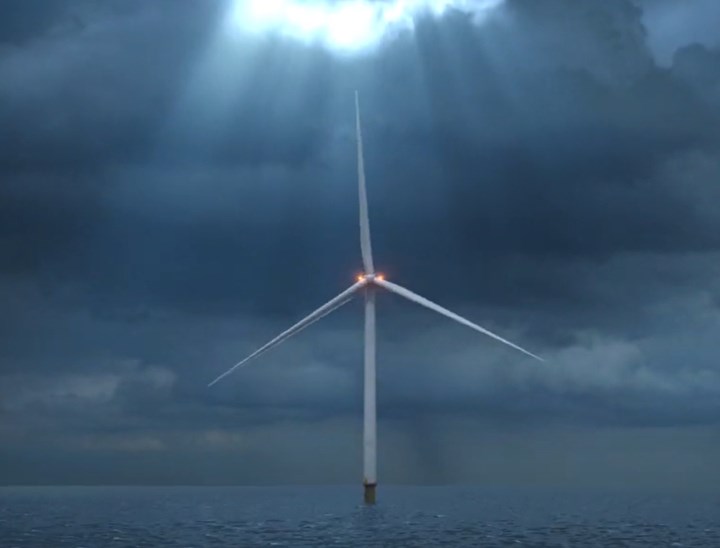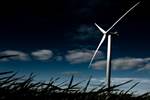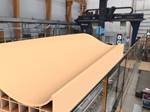Vestas unveils 15-MW offshore wind turbine with 115.5-meter-long blades
Industry’s largest rotor ups output by 65% versus 9.5 MW turbines, serial production for 2024.

Photo Credit: Vestas
(Aarhus, Denmark) continues on its path toward offshore wind innovation with the introduction of the V236-15.0-megawatt (MW) turbine. With the industry’s largest swept area exceeding 43,000 square meters and a capacity factor of over 60%, the new technology will reportedly establish a strong foundation for Vestas’ offshore leadership journey by elevating the industry benchmark for performance and continued cost reduction.
The new turbine’s 15-MW reach also matches the potential capacity of (SGRE, Zamudio, Spain) wind turbines, and surpasses ’s (Boston, Mass., U.S.) Haliade-X machine, which retains a capacity of 14 MW. Each blade on the V236-15.0 MW measures 115.5 meters (379 feet) long, giving it a total height of 261 meters, a blade reportedly longer than the 108-meter-long blades on Siemens Gamesa’s SG 14-222 DD direct drive turbine, which previously held the record. Vestas says each turbine could generate enough power for 20,000 households a year, improve wind energy production to around 80 gigwatt-hours per year and save more than 38,000 tonnes of CO2.
“Introducing our new offshore platform is a huge achievement for everyone at Vestas, as it marks a big leap forward in a very important journey,” says Henrik Andersen, president and CEO of Vestas. “As a global renewables leader, every decision Vestas takes today must be in service of building scale for renewables in the future — only by doing this can we ensure a more sustainable future energy system. Offshore wind will play an integral role in the growth of wind energy and the V236-15.0 MW will be a driver in this development by lowering levelized cost of energy, thus making our customers more competitive in offshore tenders going forward.”
To continue Vestas’ ongoing effort to elevate industry standards, the V236-15.0 MW will delivers leading park performance for all customers and harnesses Vestas’ world-class service and safety record. The new turbine also comes with a design lifetime of 25 years or more depending on site conditions. V236-15.0 offers 65% higher annual energy production than the V174-9.5 MW, and for a 900-MW wind park it boosts production by 5%, with 34 fewer turbines.
The first V236-15.0 MW prototype is expected to be installed in 2022, with serial production scheduled for 2024.
Related Content
-
Composite bipolar plates provide 81% improvement to hydrogen fuel cell power density
Ultra-thin CFRTP plates developed by Hycco achieve a 7.5 kilowatt/kilogram power density, high durability for fuel cells in long-flight drone and heavy-mobility applications.
-
SRI develops scalable, infiltration-free ceramic matrix composites
Work in two DOE projects is demonstrating C/C-SiC produced in 3-5 days with <5% shrinkage, <10% porosity and 50% the cost of conventional C/C and C/C-SiC.
-
High-tension, vertical filament winding enables affordable flywheel energy storage system
French startup Energiestro’s prototype solar energy flywheel-based storage system aims to reduce costs with glass fiber composites and prestressed concrete.






